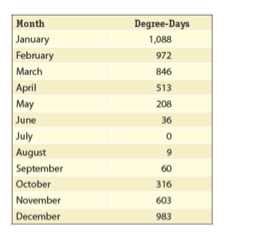Which of the following accurately describes 13C/12C ratios of plant materials and their use in climate reconstructions?
A) By analyzing the ratio of 13C/12C in marine phytoplankton, the source of the water in which the organisms resided can be determined.
B) Scientists can determine if conditions were wetter or drier, warmer or cooler, but analyzing the ratio of 12C to 13C.
C) 12C is very rare in nature. When it does appear in plant material, it is indicative of climate anomalies. By measuring the 13C/12C ratios, scientists can determine whether the plants were alive during normal or anomalous conditions.
D) Carbon is such a rare element on Earth that the 13C/12C ratios help scientists deduce glacial and interglacial cycles.
E) 13C is an unstable isotope, which decays at a constant rate. This is used to date plant material, which can then be used as a proxy for temperature and climate conditions at that time.
B
You might also like to view...
What can allow an energy source with a low net energy yield to compete in the marketplace with an energy source with a higher net energy yield?
A. market price B. stimulus C. cap and trade program D. government subsidies E. rebates
Inuit people who live in the Arctic tundra have high levels of DDT in their bodies, but live and work far from areas of industrial pollution. They eat seals and fish; seals eat fish. Which mechanism accounts for the high concentrations of DDT?
A. biological magnification B. optical magnification C. drinking Groundwater D. absorption through skin
Calculate the annual degree days for Boston, Massachusetts using the following given monthly values.

Which of the following is bordered by warm water?
A) eastern coasts in the middle latitudes B) western coasts in the middle latitudes C) western coasts in the subtropics D) eastern coasts in polar regions E) none of the above